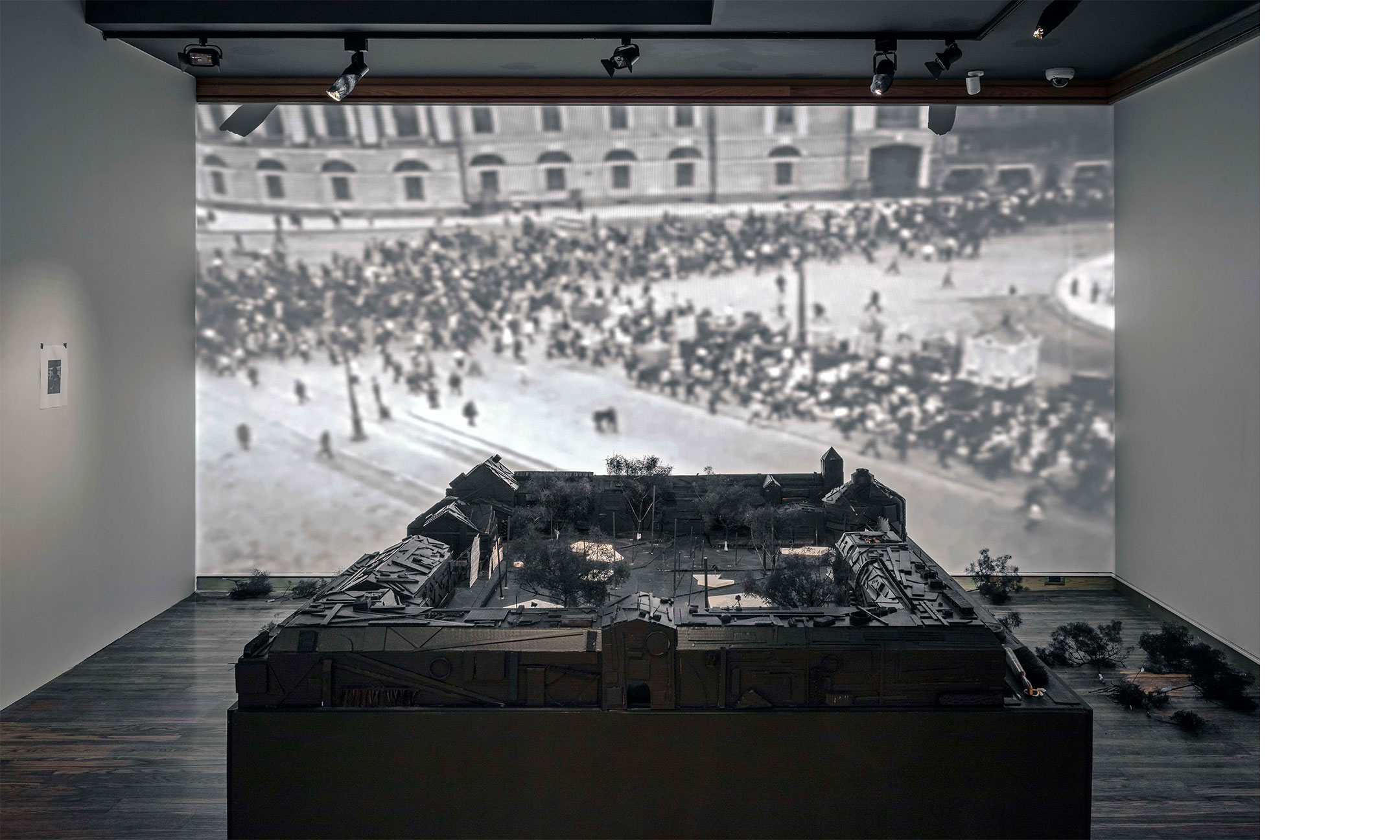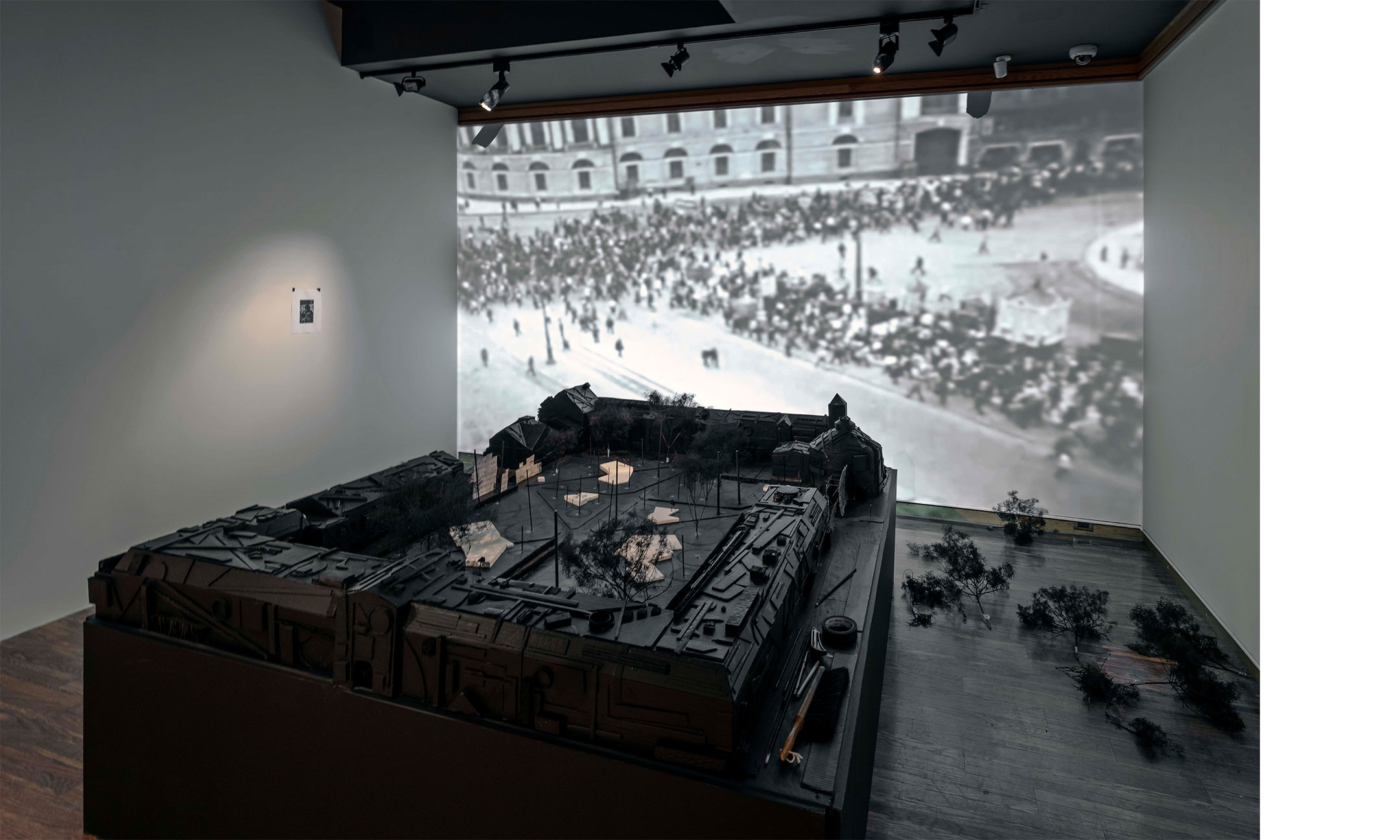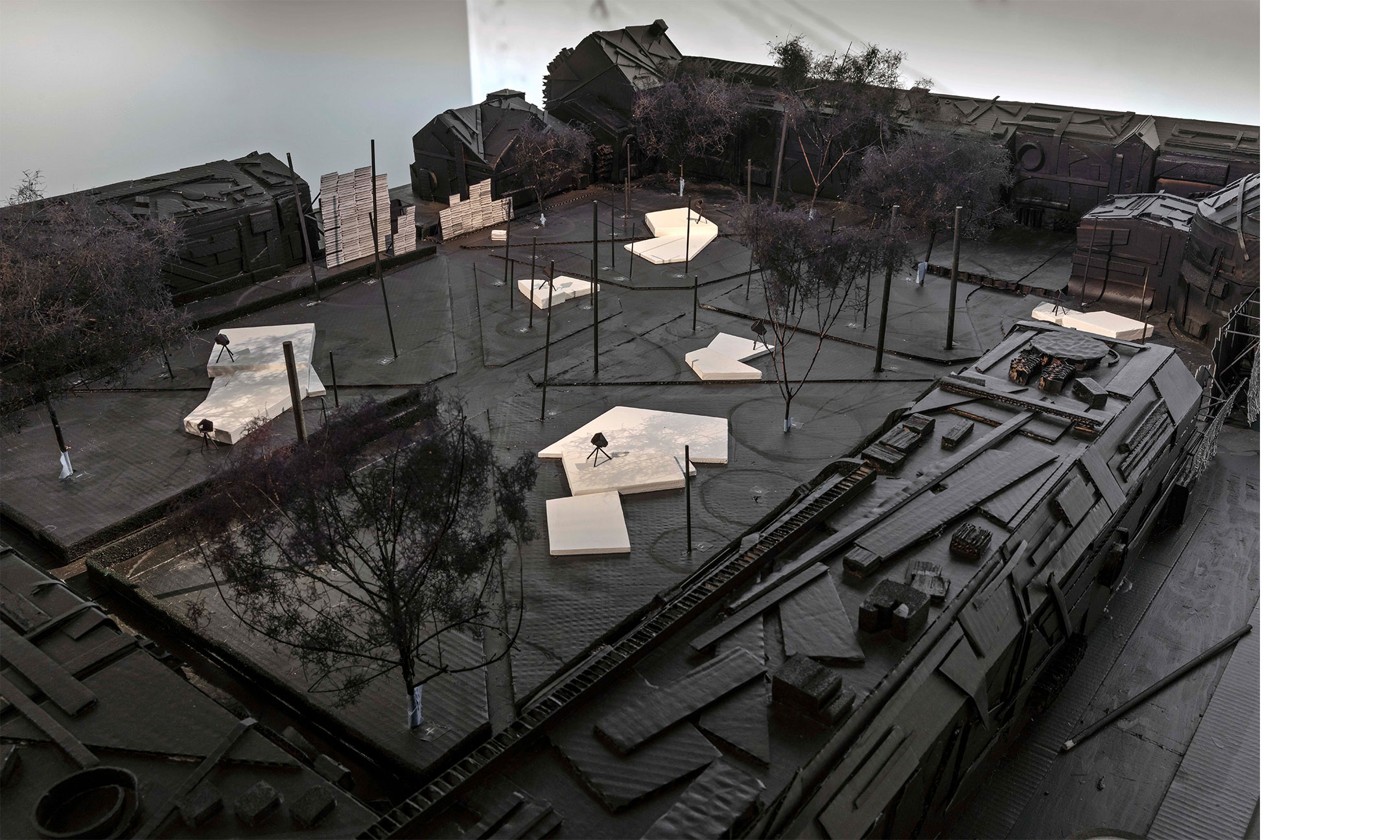


Staging Revolution
Making Models, University of Toronto
It begins with a fiction: a “lost play” by Sergei Eisenstein in which the theatre becomes a cinema. Actors walk on tightropes (repeating earlier stunts in his theatrical staging of “Wisemen”), but as the audience becomes engrossed with the actors high above their heads, the curtains of the stage pull back to reveal a screen. The actors walk overhead towards this new apparition, they disappear behind it, only to reappear on the screen, larger than life, signalling the end of the stage as we knew it —The void into which they dissipate is a third space, a liminal space that is not an “after,” nor is it “post.” It is an alternate space, a space of possibility.
While this lost play is a fiction, our interventions recreate an imagined scene in order to open a hermetically sealed gap in visual culture; A gap that Eisenstein knew all too well.
Staging Revolution — a courtyard surrounded by university structures, reveals a system at work. We have reimagined this site as a speculative architecture for a theatrical staging of revolution. Scenes from Eisenstein’s October: Ten Days That Shook the World, a dramatization of the October Revolution of 1917, flickers behind the model. The courtyard acts as a place of transition, of passing and therefore a space in which we’ve chosen to orchestrate a process of “deconcealment.” In his book After Globalization, Eric Cazdyn proposes that we must acknowledge limits in order for change to occur, be it systemic or otherwise. “Nothing can save us” he writes, and in that nothing, we can find something:
Constellations are the nothing that holds the stars together. The space in between the branches is the nothing that holds the tree together. Capitalism is the nothing that holds capital together.
But in this nothing, we find space to move. Between the trees … stages… courtyard… barricades act as backdrops.. Action in the courtyard… projections on the backdrop… tie back to eisenstein’s play.
Students are sitting in a lecture hall. Voices drift across the campus. A muffled sound, a cry in unison, and then another. A loudspeaker of some kind. Unable to concentrate, a student moves to the window while others pull out their phones. Below, a courtyard with masses of students and a series of barricades. The stage has been set. This revolution will probably be on social media. Students leave the classroom, taking their chairs with them. The stage set becomes realized as chairs begin to pile up.